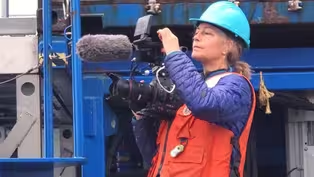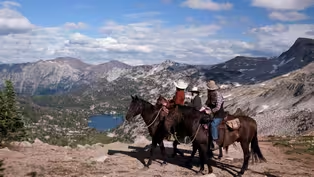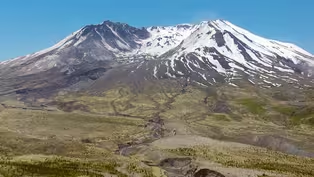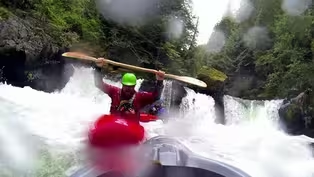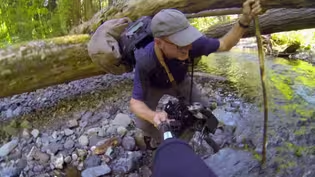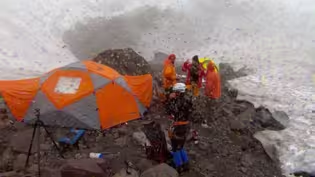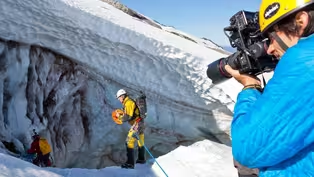Oregon Field Guide
Behind the Scenes Oregon Revealed Coastal Wonder
Season 1 Episode 13 | 6m 42sVideo has Closed Captions
Go behind the scenes of Oregon Revealed Coastal Wonder with Director Todd Sonfleith.
Go behind the scenes of Oregon Revealed Coastal Wonder with Director Todd Sonfleith.
Problems playing video? | Closed Captioning Feedback
Problems playing video? | Closed Captioning Feedback
Oregon Field Guide is a local public television program presented by OPB
Oregon Field Guide
Behind the Scenes Oregon Revealed Coastal Wonder
Season 1 Episode 13 | 6m 42sVideo has Closed Captions
Go behind the scenes of Oregon Revealed Coastal Wonder with Director Todd Sonfleith.
Problems playing video? | Closed Captioning Feedback
How to Watch Oregon Field Guide
Oregon Field Guide is available to stream on pbs.org and the free PBS App, available on iPhone, Apple TV, Android TV, Android smartphones, Amazon Fire TV, Amazon Fire Tablet, Roku, Samsung Smart TV, and Vizio.
Providing Support for PBS.org
Learn Moreabout PBS online sponsorshipMore from This Collection
Behind The Scenes Axial Seamount
Video has Closed Captions
OPB crew works around the clock following scientists at sea studying an active volcano. (6m 17s)
Behind the Scenes Horse Women of the Hen Party
Video has Closed Captions
A trek into the Wallowas celebrates the legacy of the "Horsewomen of the Hen Party." (36m 54s)
Behind The Scenes Unearthing the lost stories of Mount St. Helens
Video has Closed Captions
Behind the scenes Unearthing the lost stories of Mount St. Helens (31m 50s)
Behind the Scenes Waterfall Kayaking
Video has Closed Captions
We share a behind-the-scenes account of a story that will take your breath away. (6m 3s)
Video has Closed Captions
Behind the scenes of our largest, most dangerous expedition ever. (11m 50s)
Behind the Scenes Mount Saint Helens Glacier Caves
Video has Closed Captions
A behind-the-scenes look at Oregon Field's story on Mount St. Helens and Glacier Caves. (10m 33s)
Behind the Scenes Mount Hood Glacier Caves
Video has Closed Captions
Go behind the scenes of Oregon Field Guide's "Glacier Caves: Mt. Hood’s Secret World." (10m 25s)
Providing Support for PBS.org
Learn Moreabout PBS online sponsorship(upbeat music) (birds squawking) - I'm Todd Sonflieth.
I'm one of the photographers here at OPB.
I've been working on Oregon Field Guide ever since it started, 27 years ago now.
Way back when we started this series of these picturesque shows on Oregon.
The first one was back in 1996 called "Oregon Portraits".
It was just so well-accepted that we knew that we just had to keep doing these every two or three years.
And so here we are at the fifth one, "Oregon Revealed Coastal Wonder" cause this is gonna focus just on the coast.
(upbeat music continues) We knew we had to shoot some aerials to make it happen.
You know, that was... That was a must.
Aerial footage is always really hard to get because it's so expensive to do aerials.
We've tried airplanes, we've tried other helicopters, just kind of handholding the camera, shooting out the side of the helicopter.
And this time around, we wanted to really invest in some good stabilized footage.
So this system, it's gyro-stabilized.
It's a 5-axis gimbal.
Any sudden movement in the camera gets stabilized instantly and so it gives for a real dramatic tour of the landscape.
(waves crashing) The Cineflex System is operated by a whole separate camera operator.
It's so sophisticated.
So many things can go wrong with it that the operator needs to be able to know how to fix it.
So I became the director at that point.
I knew we needed some sort of route.
You just don't get in a helicopter and just start flying.
You have to have a plan.
It's so expensive.
I spent a lot of time with Google Earth, putting the camera angle at different positions and flying along the route and trying to pinpoint different targets that I might wanna shoot with a helicopter.
I was able to pick that file and give it to the pilot to put it in his navigation system.
I had my shot list in my lap, and I was trying to keep track of that.
So I'm able to talk to the operator in the backseat, over the intercom system.
- [Pilot] Got a shadow on the trees there.
- [Todd] And then a pilot is constantly looking out for hazards.
The big thing with him is wires.
You know, they're looking for power lines.
And we don't wanna get tangled up in those.
That'll ruin our day really quick.
- [Pilot] There they are.
- [Todd] Yep.
(radio static) One of my goals on this project was to not just show the beach, you know.
The crashing waves are obvious and the beautiful cliffs are beautiful, but I really wanted to show the estuaries that we have and all of the ports and the small towns, you know.
People love seeing their own little small town from the air.
There's just so much to see along the Oregon Coast once you start poking around.
And that's really what we wanted to show in this project.
(helicopter humming) - [Pilot] I think we could probably start climbing out of here.
- [Todd] Let's see if this bend, what happens.
- [Pilot] Okay.
- [Todd] There was one point, we came down on the Chetco River and Pete decided to kinda get down low over the water.
And so we were flying along maybe 10 feet above the water - [Pilot] Boy, they made this thing just big enough for our rotor system.
- [Todd] That was nice for them.
- [Pilot] No doubt.
- [Todd] That was a little nerve-racking for me.
I was glad to get out of there.
(soaring orchestral music) - [Pilot] Well, you're just all over it.
Birds and rafters.
- [Todd] One of the missions of this trip is to find people in action, doing things.
You can't really plan on it, but you know, a wind surfer out in the Columbia River or the guys playing on the sand dunes with their ATVs.
- [Pilot] Which one are you going for?
Right or left?
- [Todd] I'm going right.
- [Pilot] Okay.
- So when you find those moments, you sort of have to stop and play with them a little bit.
Maybe hover around the people.
And they probably wonder, you know, "What's going on with this big helicopter in the air?"
(radio dialogue crackles) - [Todd] Yeah, let's just go cruise by them now.
- [Passenger] Nice flying buddy.
- [Todd] Good job.
- [Passenger] Yeah.
- [Todd] The pilot and Mark the operator, both of them had worked together before on other projects.
And so they really had this good relationship and could read each other without saying anything.
They would come up with these just epic moves around things like the seat ahead was, was one of them.
We were coming along the cliff, as the pilot was gaining altitude, Mark, the operator was spinning the camera around as we came around the lighthouse and those kinds of moments that I was just waiting for and we nailed some of them.
- [Pilot] Helicopter shadow 3, 2, 1.
- [Todd] And there was a few times where you'd be getting a great shot but the sun was behind our back and then this shadow of a helicopter comes across the scene.
And so that just ruins it you know.
(laughter) - [Pilot] Nice shadow, nice shadow.
That one's no good huh?
- [Todd] When you have the camera out on the nose of the helicopter, you always run the risk of bugs getting splattered on to the lens.
- [Pilot] Oh, I just got a bug.
- [Passenger] Uh oh.
- [Pilot] Yeah.
- [Todd] So we land and operator gets out, cleans the lens and gets back in and we take off and keep flying.
And that probably happened five or six times.
It adds to the cost of things, you know?
Cause whenever you land the blades are still turning and so that your meters running and so I'm sitting there as a director going, okay we're spending money, wiping bugs off the lens.
- [Pilot] That looks good Mark.
- [Todd] I did have a plan, you know, on average of 70 miles an hour in the helicopter and then ended up working almost perfectly, just right on schedule the whole day.
And by the time we got to Brookings the sun setting and I like, yeah, we did it.
So that was just so much fun, to be up in the helicopter for a whole day.
It just never ceases to amaze me.
You know, how much access we have to all this awesome scenery that we have around here.
And to be able to see all of that from the air it's just a whole new experience.
I'm just, pinch myself all the time I can't believe I get to do this kind of thing.
So it's an awesome experience to be able to share it with people.

- News and Public Affairs

Top journalists deliver compelling original analysis of the hour's headlines.

- Drama

Benjamin Wainwright stars as Maigret in the contemporary adaptation of Georges Simenon's novels.












Support for PBS provided by:
Oregon Field Guide is a local public television program presented by OPB
